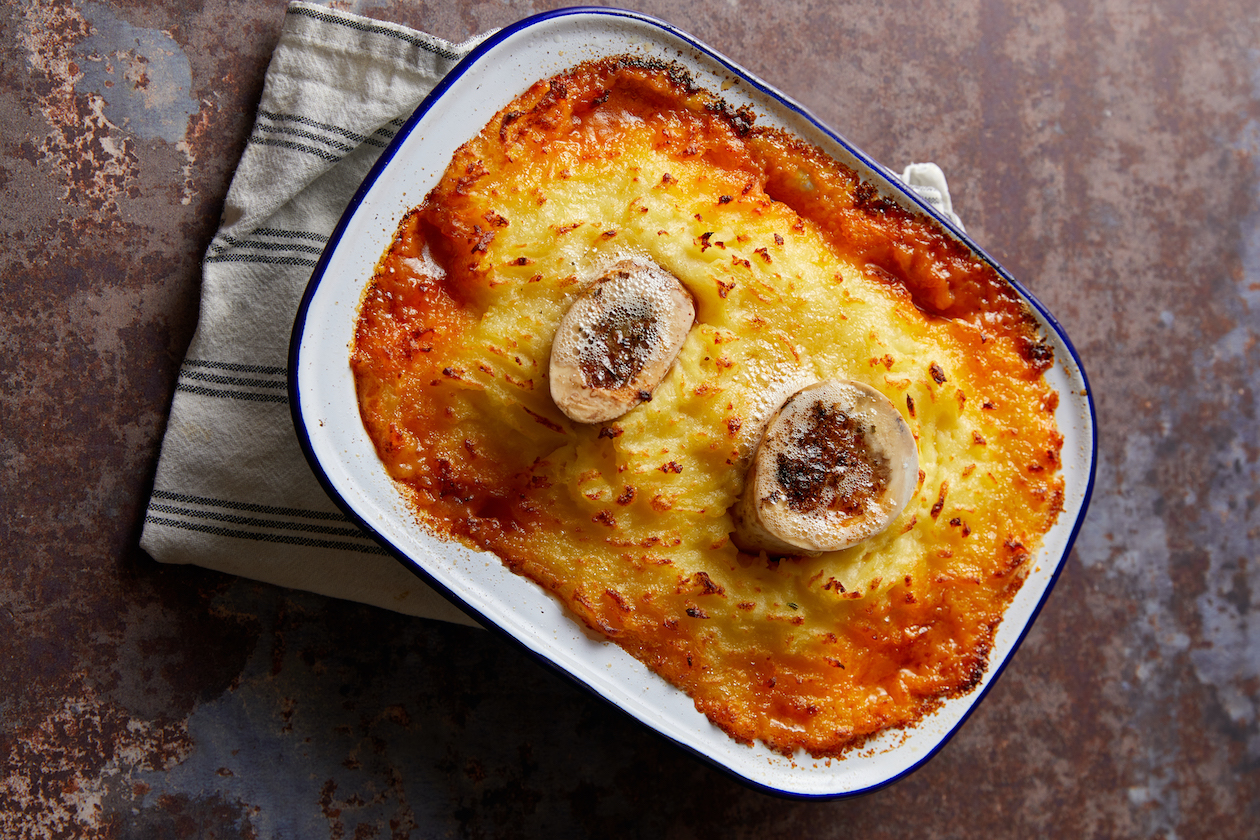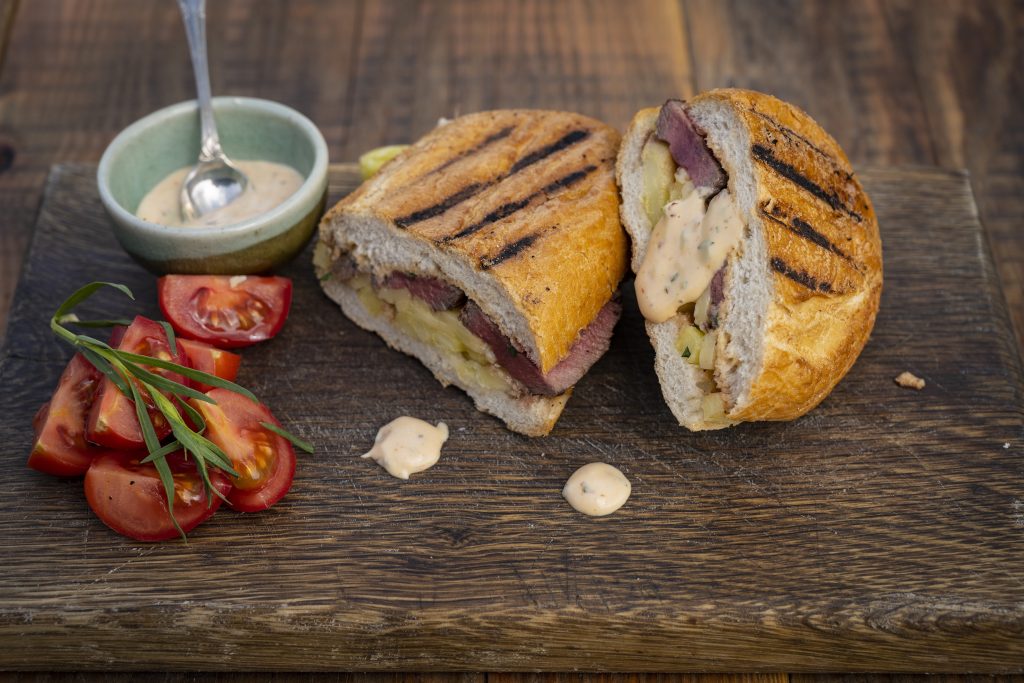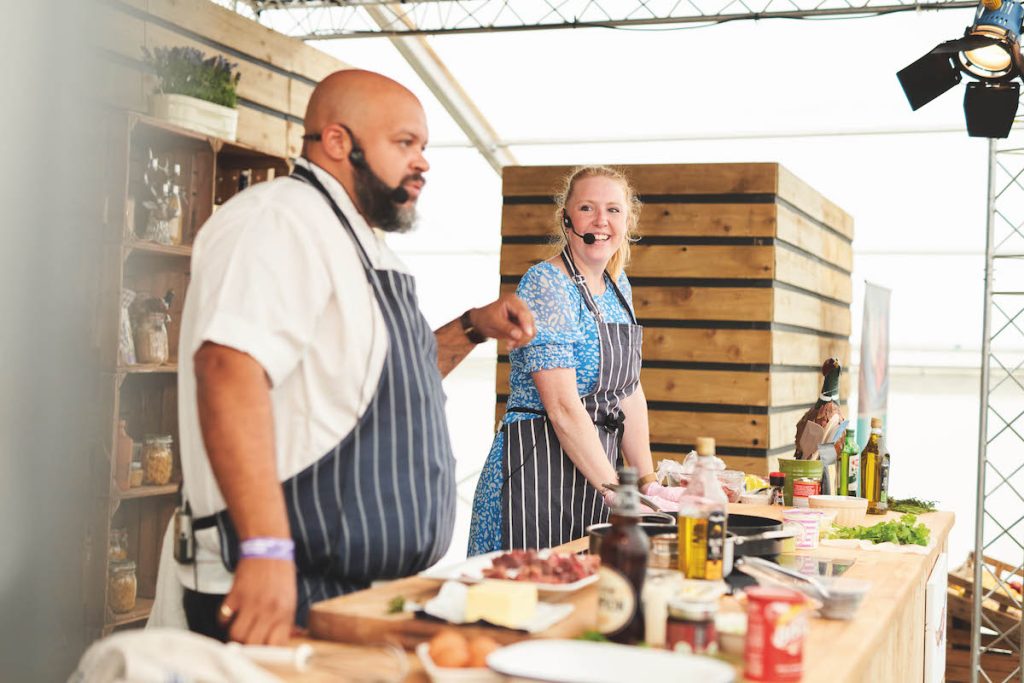Win CENS ProFlex DX5 earplugs worth £1,149 – enter here
Mixed game cottage pie
 Rose Prince - Shooting Times Cookery - Mixed Game & Marrow Bone Cottage Pie. Finished Recipe.
Rose Prince - Shooting Times Cookery - Mixed Game & Marrow Bone Cottage Pie. Finished Recipe.
Mixed game cottage pie recipe
Prep time: About 40 minutes Cooking time: About 2½ hours
Ingredients
- 2tbsp duck fat or dripping
- 2 carrots, diced small
- 1 stick celery with strings removed, sliced
- 2 medium onions, finely chopped
- 3 garlic cloves, finely chopped
- 1kg small-diced (1cm pieces) mixed game (venison, wild boar, rabbit, pheasant, mallard)
- 1tsp dried thyme leaves
- 4 juniper berries, crushed
- 1tbsp tomato puree
- 75ml red wine or port
- about 1 ltr beef or chicken stock
- 1 bay leaf
- 2tbsp Worcestershire sauce
- 1.5kg large potatoes, peeled
- 100g butter, melted
- 4 bone marrow rounds, cut to about 8cm in length
- Extra butter for the surface
Note: You can make the base/filling in advance and, if you have a low oven or Aga, cook it overnight at 70°C to 80°C, if preferred.
Method
- Melt the fat in a large, heavy-based pan or casserole over a medium heat and add the carrots. Cook until they shrivel — up to five minutes. This sweetens them and the flavour of the stew. Add the celery, onion and garlic. Cook until soft — about two minutes.
- Add the meat with the thyme and crushed juniper berries, then stir-fry until it has all changed colour. There is no need to singe or brown the meat, or it will not tenderise as nicely during the simmering process.
- Add the tomato puree, stir over the heat for a moment, then add the wine. When it bubbles, add enough stock to cover the contents of the pan to depth of 3cm. Add the bay leaf, let the stew come to boiling point, then turn down to a very slow simmer. Cook for between one hour and an hour and 25 minutes, until the meat is tender. Season with salt to taste and some freshly ground black pepper, then add the Worcestershire sauce.
- Transfer into an ovenproof dish measuring about 20cm across and 8cm deep (like a shepherd’s pie dish). Allow it to cool, then press the marrow bones down into the meat.
- While the stew simmers, boil the potatoes until soft. Preheat the oven to 190°C.
- Drain the potatoes, allowing them to sit in a colander until they stop steaming. Mash or grate them, mixing with the melted butter. Season with salt to taste. Spoon the potato on to the surface of the pie, around the marrow bones. Dot a little butter on the surface. Bake the pie until it is bubbling and crisp on top. Serve with extra Worcestershire sauce or ketchup.
A note on game cottage pie
I began adding marrow bones to dark-meat braises by accident when I had a surplus and now I do it by habit. It is like butter on bread — companions in kind — adding richness and great fathoms of flavour.
For game, it is a bonus, making up for the lack of fat. You will see a lot of bone marrow speared into pastry pies these days because it looks fabulous in food photos, but it is not only for show. The marrow renders during cooking, trickling into and under a pie, adding something special.
Of course, game animals do possess bone marrow. A large red deer has enough jelly in its shin to deliver the same effect as that from a beef animal, but it’s not so easy to buy it.
I used to buy red deer osso buco from online butcher Donald Russell — discs of shin, with bone attached, that mimic the famous northern Italian cut and recipe — but they are no longer available. If any Scottish game dealer can provide this, I would be grateful enough to share the source and that greatest of recipes in Shooting Times.
I still smash up gamebird carcasses, roast them and make stock, so the minimal amounts of marrow can influence the taste. They never become as gelatinous as beef, chicken or pork broth, but the effort is still worthwhile. However, don’t forget to fine-sieve the stock to remove any grit. (See Rose Prince’s stock recipe here.)
The more that can be utilised during this current high-inflation crisis the better. It appears that home economics are back on-trend.
Related Articles
Get the latest news delivered direct to your door
Subscribe to Shooting Times & Country
Discover the ultimate companion for field sports enthusiasts with Shooting Times & Country Magazine, the UK’s leading weekly publication that has been at the forefront of shooting culture since 1882. Subscribers gain access to expert tips, comprehensive gear reviews, seasonal advice and a vibrant community of like-minded shooters.
Save on shop price when you subscribe with weekly issues featuring in-depth articles on gundog training, exclusive member offers and access to the digital back issue library. A Shooting Times & Country subscription is more than a magazine, don’t just read about the countryside; immerse yourself in its most authoritative and engaging publication.







